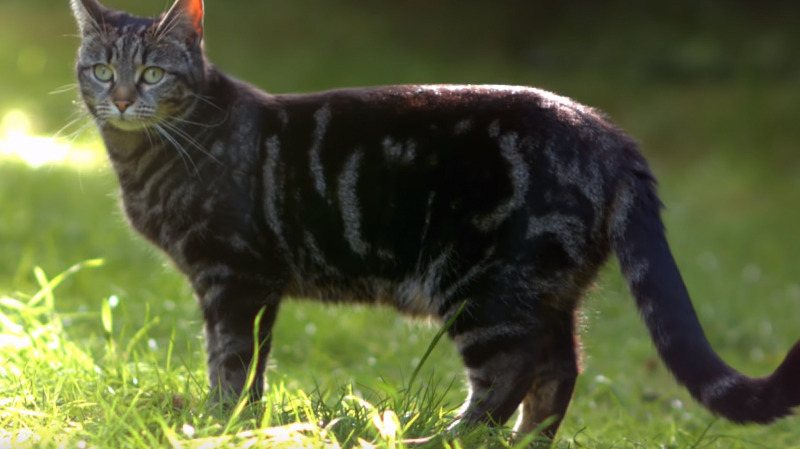- info@wildlifeanimalcontrol.com
Call us for help in your town
Wildlife Control Education
Shared behavior of domesticated and wild cats
Author: David Seerveld
There are plenty of differences between wild and domestic cats. However, many mannerisms and behaviors are shared between the two, and for the same or similar reasons. Here are some of the shared behaviors between domesticated and wild cats.
They both bury their feces
Cat feces contain unique identifying scents (and pheromones) that other cats are very aware of and can use to gather information from. For most cats, this means if they don’t bury their feces, other cats in the area will be able to identify them, track them, and potentially poach their territory.
Large wild cats will often bury their feces in the middle of their territory to prevent attracting attention from other cats or predators. However, they will leave their feces unburied around the perimeter of their territory to warn away potential encroachers. Likewise, dominant cats in family units will often leave their feces unburied to assert their dominance. Less dominant members, on the other hand, will bury the feces in an attempt to not attract attention to themselves.
Housecats are the same. Unless they're sick (or think that they’re the alpha of your family) they will bury their feces to avoid attracting attention to themselves and their presence.
Example: A puma will bury its feces in the dirt, and a housecat will bury it in the litterbox.

They sharpen their claws the same way
Both domesticated and wild cats have a habit of scratching various surfaces. They do this primarily to sharpen their claws. Although, we shouldn’t think of this behavior like the cat using a whetstone sharpening a blade. Cat claws don’t actually get sharper or filed down when they scratch. Instead, cats are constantly growing new claws and shedding old ones. As the old claws grow dull new, sharp claws grow beneath. When domesticated cats scratch the couch, and wild cats scratch trees, it’s a way to expedite the shedding process so that they can get a new pair of sharp claws a little quicker.
Example: Leopards sharpen their claws on the trunk of a tree, and housecats sharpen their claws on a scratching post, or your furniture.

They use the same tools to mark territory
Both domestic and wild cats mark territory in an attempt to warn other cats to keep away. They do this primarily through scent.
Cat urine and feces are filled with pheromones that act as the cat’s unique signature. A cat that marks territory with urine will spray on vertical surfaces like trees or walls. Cats also have scent glands at various points on their body: forehead, cheeks, under the chin, and on the paws. Typically, the glands on the forehead are used to mark living things like people and other cats, while the glands on the cheeks, under the chin, and on the paws are used to mark inanimate objects.
Example: A bobcat will spray urine on a plant, and a housecat will spray it on your door.
All cats knead their paws
Cats of all sizes knead their paws. It’s an odd behavior and we don’t know for sure where it came from. The common theory has to do with a cat’s early life and the way they would feed. When kittens are feeding, they instinctively perform the kneading action in the area around the mother’s teat to help milk flow better. Some cats still suckle on whatever it is their kneading, which supports the early-life learned behavior theory for this behavior. Over time this behavior seems to have become a default way for a cat to show affection or satisfaction.
Both prefer to run away and hide from danger rather than fight
Cats don’t like conflict. Even big cats known for their hunting abilities (like lions) would rather avoid danger than face it. Why? Because any injury in the wild can potentially be life-threatening. As such, over time cats developed a fight or flight instinct with a strong emphasis on flight. This instinct to avoid danger is strong in both domestic and wild cats.
Example: A cheetah will run away from a lion, and a housecat will run away from a raccoon.
All cats talk
Cats of all sizes are very vocal creatures with lots of things to say. Common sounds that are shared among different animals in the cat family are purring, chirping, roaring and screaming. However, not all cats can make the same sounds.
Bobcats can make many of the same noises that housecats make, like purring, hissing, or chirping. Tigers, on the other hand, don’t purr like a house cat; they chuff instead (sort of like pushing out a heavy, vibrating breath). And lions, of course, roar. Though all three animals make their respective noises through some form of body vibration.
And even though they make different noises, most of the time they make noises for the same reason: to get attention, show affection or warn away danger.
Example: A cheetah at Big Cat rescue was observed purring when being groomed by another cat, and housecats also purr when being pet by people.
For more wildlife info, go back to the home page, or read more about stray cats, or visit our locations.

















